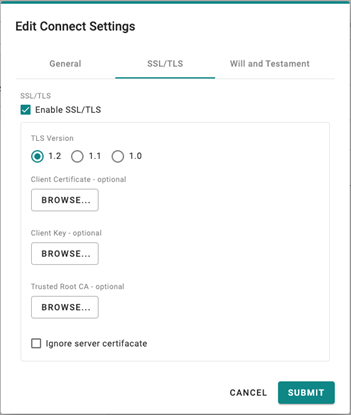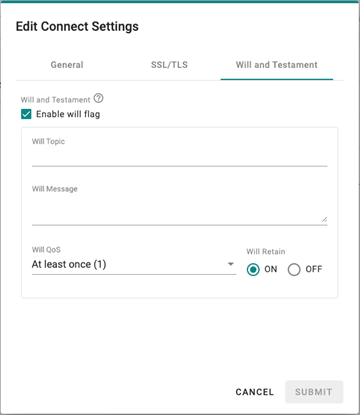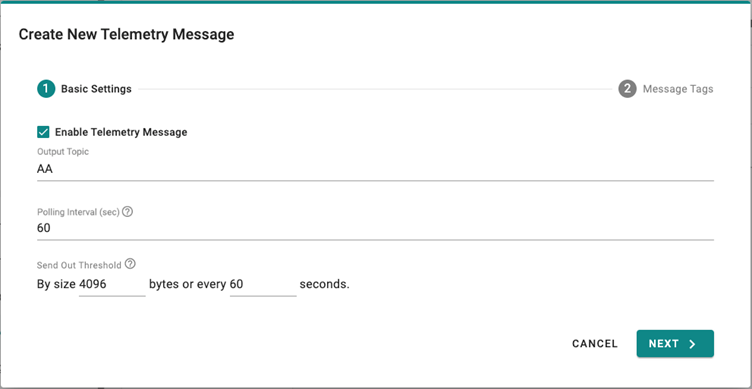MQTT Client
Go to Cloud Connectivity > MQTT Broker and click on MQTT Client to set up connections to the MQTT Broker.
Creating an MQTT Client Connection
To create and confirgure a MQTT client connection, do the following:
- Click ADD CONNECTION.
- Specify a Server (default port: 8883).
- Select a MQTT Version.
- Enter Client ID, Username, and Password.
- (optional) Disable message persistent on the Broker.
- Select a way of message QoS, and retain function on/off.
- (optional) Enable SSL/TLC.
- (optional) Enable the Will flag.
- (optional) Select a way for message QoS and retain function for the Will flag.



Note: There is a risk of data getting lost during the period of connection prior to a network connection check (Keep Alive check). To avoid this, we suggest setting a shorter Keep Alive Time (e.g., 10 seconds) or enabling QoS Exactly Once (2).
Creating a New Telemetry Message
Note: You must first create a connection and select the D2C telemetry messages to send to the MQTT broker.
After an MQTT Client connection is created, you can create a new telemetry message as follows:
- Click + MESSAGE.
- Specify an output topic.
- Enter a time for the polling interval.
- Set up a threshold by size or a certain interval.
- Click NEXT.
- Select tags from provides (e.g., Modbus Master).
- (optional) Enable custom payload by using the jq filter.
- Click SUBMIT.


NOTE: The values shown in the Custom Payload Result are examples and not real values.
Enabling Remote API Invocation
After an MQTT Client connection is created, you can enable remote API invocation by following the steps here
Last updated on 2022-07-22 by Cecilia Fernandes